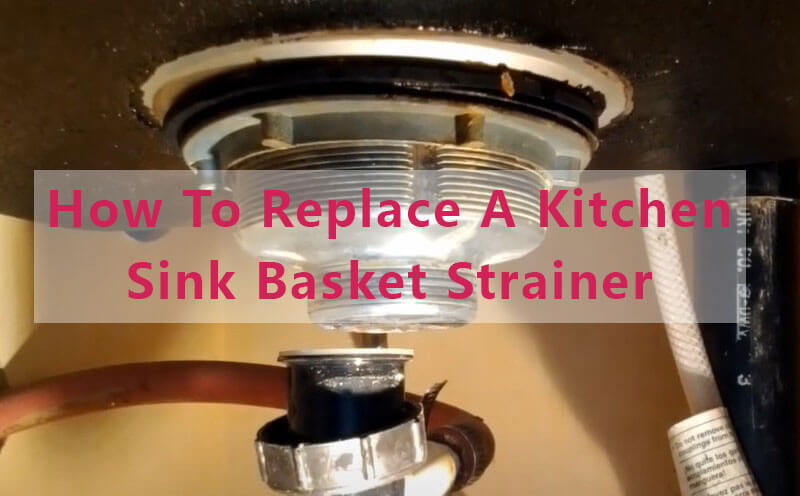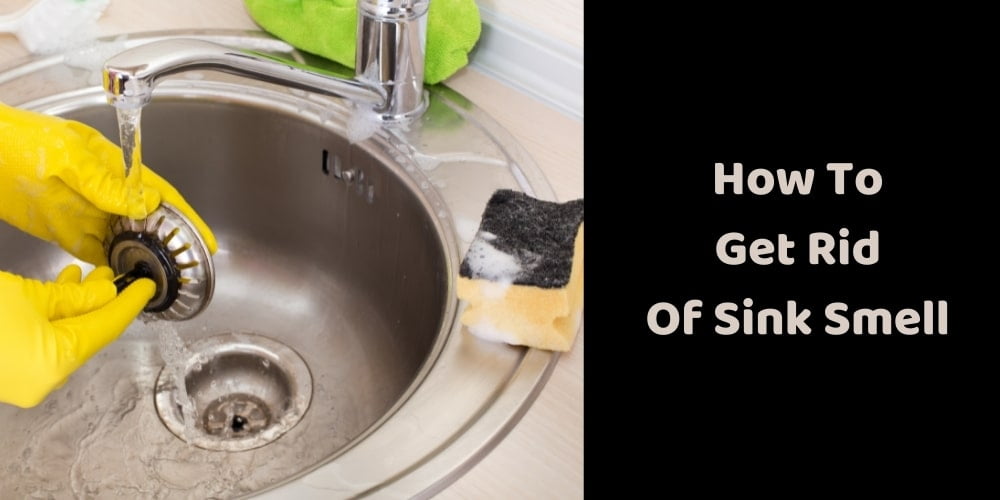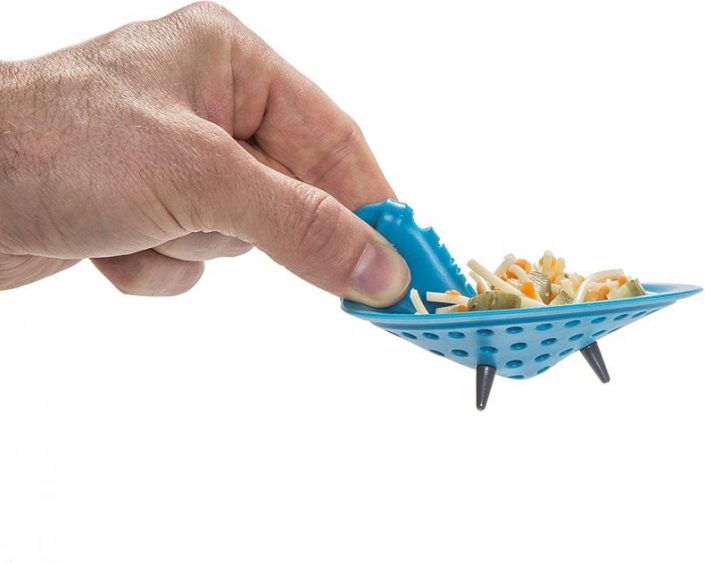If you're experiencing problems with your kitchen sink strainer not working, you're not alone. This essential kitchen tool can easily get clogged or damaged over time, causing inconvenience and frustration for homeowners. However, before you call a plumber or rush to replace the entire strainer, there are some simple DIY solutions that may fix the issue.How to Fix a Kitchen Sink Strainer That is Not Working
One of the most common problems with kitchen sink strainers is clogging. Food particles, grease, and other debris can easily get stuck in the strainer, preventing water from draining properly. To unclog it, start by removing any visible debris from the top of the strainer. Next, pour boiling water down the drain to help loosen and dissolve any remaining build-up. For tougher clogs, try using a plunger or a plumbing snake to dislodge the blockage.How to Unclog a Kitchen Sink Strainer
Aside from clogging, there are other issues that can cause a kitchen sink strainer to stop working. These include loose or damaged parts, a faulty seal, or improper installation. To fix a loose strainer, try tightening the mounting bolts or replacing them if they are damaged. If the seal is broken, it will need to be replaced to ensure proper functioning. And if the strainer was not installed correctly, you may need to call a professional to adjust it.Common Problems with Kitchen Sink Strainers and How to Fix Them
If you're unsure of the cause of your kitchen sink strainer not working, here are some troubleshooting tips to help you identify and fix the issue:Troubleshooting Tips for a Kitchen Sink Strainer That is Not Working
If your kitchen sink strainer is beyond repair, you may need to replace it. This may seem like a daunting task, but with the right tools and instructions, it can be done easily. First, turn off the water supply to the sink and disconnect the drain pipes. Next, remove the old strainer by loosening the mounting bolts and lifting it out. Install the new strainer by following the manufacturer's instructions and reconnect the drain pipes. Finally, turn on the water supply and test the new strainer to ensure it is working properly.How to Replace a Kitchen Sink Strainer
If you're a DIY enthusiast, there are some simple solutions you can try to fix your kitchen sink strainer before calling a professional. These include using a plunger or plumbing snake to dislodge clogs, tightening loose parts, or replacing damaged components. You can also try using natural remedies such as baking soda and vinegar to dissolve build-up and odors.DIY Solutions for a Kitchen Sink Strainer That is Not Working
Preventing issues with your kitchen sink strainer starts with regular cleaning and maintenance. To keep it in top working condition, make sure to remove any visible debris from the strainer after each use. Additionally, once a week, pour a mixture of baking soda and vinegar down the drain and let it sit for a few minutes before flushing it with hot water. This will help prevent build-up and keep your strainer smelling fresh.How to Clean and Maintain a Kitchen Sink Strainer
There can be several reasons why your kitchen sink strainer is not working, and it's essential to identify the cause to effectively fix the issue. Some possible causes include clogging due to food particles, grease, or soap residue, a loose or damaged seal, or a faulty installation. By thoroughly inspecting the strainer and its components, you can determine the cause and take the necessary steps to address it.Possible Causes for a Kitchen Sink Strainer Not Working and How to Address Them
If you're still having trouble with your kitchen sink strainer, it may be time to seek expert advice. A professional plumber can help diagnose the issue and provide the best solution for your specific situation. They can also offer tips on how to properly maintain your strainer to prevent future problems.Expert Advice on Fixing a Kitchen Sink Strainer That is Not Working
While some issues with kitchen sink strainers are unavoidable, there are some steps you can take to prevent them from occurring. These include regularly cleaning and maintaining your strainer, avoiding pouring grease or oil down the drain, and using a drain cover to catch large food particles. By following these tips, you can help extend the lifespan of your kitchen sink strainer and avoid the inconvenience of a malfunctioning one.Preventing Kitchen Sink Strainer Issues: Tips and Tricks
The Importance of a Functional Kitchen Sink Strainer in Your House Design

Why is a Kitchen Sink Strainer Important?
The Role of a Kitchen Sink Strainer
 A kitchen sink strainer is a device that is placed inside the sink drain to catch any food particles, debris, or other objects that may clog the pipes. It is designed to allow water to flow through while trapping any unwanted items. This prevents clogs and keeps your sink draining properly. Without a functional kitchen sink strainer, you may experience slow drainage, foul odors, and even plumbing issues.
A kitchen sink strainer is a device that is placed inside the sink drain to catch any food particles, debris, or other objects that may clog the pipes. It is designed to allow water to flow through while trapping any unwanted items. This prevents clogs and keeps your sink draining properly. Without a functional kitchen sink strainer, you may experience slow drainage, foul odors, and even plumbing issues.
Common Issues with a Malfunctioning Kitchen Sink Strainer
 If your kitchen sink strainer is not working properly, you may notice water pooling in your sink, slow drainage, or even foul odors coming from your drain. This can not only be frustrating but also unsanitary. Additionally, a clogged sink can lead to more serious plumbing issues, resulting in costly repairs. It's important to address any issues with your kitchen sink strainer as soon as possible to avoid these problems.
If your kitchen sink strainer is not working properly, you may notice water pooling in your sink, slow drainage, or even foul odors coming from your drain. This can not only be frustrating but also unsanitary. Additionally, a clogged sink can lead to more serious plumbing issues, resulting in costly repairs. It's important to address any issues with your kitchen sink strainer as soon as possible to avoid these problems.
How to Fix a Kitchen Sink Strainer
 If you are experiencing issues with your kitchen sink strainer, there are a few steps you can take to try and fix it. First, remove the strainer from the drain and clean it thoroughly. Often, a buildup of food particles and debris can cause the strainer to become ineffective. If cleaning the strainer does not solve the issue, you may need to replace it entirely. Luckily, kitchen sink strainers are relatively inexpensive and easy to replace.
If you are experiencing issues with your kitchen sink strainer, there are a few steps you can take to try and fix it. First, remove the strainer from the drain and clean it thoroughly. Often, a buildup of food particles and debris can cause the strainer to become ineffective. If cleaning the strainer does not solve the issue, you may need to replace it entirely. Luckily, kitchen sink strainers are relatively inexpensive and easy to replace.
The Importance of Choosing the Right Kitchen Sink Strainer
 When it comes to choosing a new kitchen sink strainer, it's important to consider the material and design. A stainless steel strainer is a popular choice for its durability and resistance to rust and corrosion. Additionally, opt for a strainer with a fine mesh to catch even the smallest of particles.
In conclusion, a functional kitchen sink strainer is a crucial component of your house design. It not only keeps your sink clean and functioning properly, but it also helps to prevent more serious plumbing issues. If you are experiencing issues with your kitchen sink strainer, be sure to address them promptly to avoid any further problems. Choose a high-quality strainer and keep it clean to ensure your kitchen remains the heart of your home.
When it comes to choosing a new kitchen sink strainer, it's important to consider the material and design. A stainless steel strainer is a popular choice for its durability and resistance to rust and corrosion. Additionally, opt for a strainer with a fine mesh to catch even the smallest of particles.
In conclusion, a functional kitchen sink strainer is a crucial component of your house design. It not only keeps your sink clean and functioning properly, but it also helps to prevent more serious plumbing issues. If you are experiencing issues with your kitchen sink strainer, be sure to address them promptly to avoid any further problems. Choose a high-quality strainer and keep it clean to ensure your kitchen remains the heart of your home.

















































:max_bytes(150000):strip_icc()/how-to-install-a-sink-drain-2718789-04-5715d67f5b7d41429d42bf705bb70e2c.jpg)




































